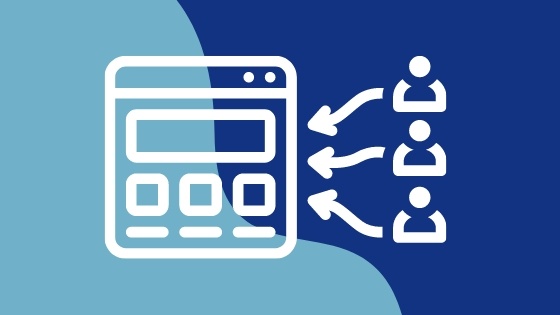More people are shopping online for home goods than ever before. As the remote workforce continues to grow, consumers are investing in décor and furniture updates to accommodate new work-from-home spaces and lifestyle changes.
For home and garden brands, it’s time to take advantage of selling through retailers like Wayfair and Overstock.
Wayfair reported that its online sales increased 20% in Q1 of 2020, with a 90% year-over-year increase in sales over the first few weeks of Q2, according to Digital Commerce 360.
And Overstock placed second on the National Federation’s (NRF) “2021 Hot 25 Retailers List” after achieving sales growth of 75% from 2019 to 2020.
Retailers such as Wayfair and Overstock have built their reputations by offering various online innovations to the furniture and home goods market. However, retailers and brands alike must continue to differentiate these shopping experiences to win on the digital shelf.
Learn how home and garden brands have the power to win on Wayfair, Overstock, and beyond with high-quality product content and proper activation.
What Drives Consumers To Convert When Shopping for Furniture Online?
Home and garden brands must adhere to each retailer’s requirements, ultimately limiting their control of precisely how their products are displayed.
Your product content plays a crucial role in how consumers — who might be unable to inspect your offerings in a physical store — interact with your brand and products across the digital shelf.
It’s critical to ensure this content shows up effectively on each of the intended channels.
Deliver the Right Brand Experiences
As a brand manufacturer, you must deliver high-quality product information, images, and other digital assets in the right context to influence your next sale.
But delivering channel-specific content at the speed and scale required can be a difficult task.
Each retailer or distributor has unique requirements and methods of data collection — and these requirements can change frequently. In order to succeed on the digital shelf, you must stay up-to-date on the latest requirements for each individual channel.
How to Sell on Wayfair
On Wayfair, for example, product names cannot exceed 150 characters and should follow proper sentence case. For the copy, each product requires either a minimum of three feature bullets or marketing copy.
Wayfair only requires one main product image, but it must have dimensions of at least 800 x 800 pixels with 300 DPI.
On Wayfair, product dimensions should be in inches, and product weight should be in pounds.
Another requirement differentiating Wayfair from Overstock is the inclusion of the California Proposition 65 Warning, meaning you must note with “Yes” or “No” if a product requires a consumer warning label for chemical exposure.
How to Sell on Overstock
On Overstock, however, a minimum of three images is required per product, including silo, lifestyle, and detail. These images must be a minimum of 650 x 650 pixels.
For product dimensions, accepted units of measurement on Overstock include:
- Inches;
- Feet;
- Yards;
- Millimeters;
- Centimeters; and
- Meters.
For product weights, acceptable units of measurement are:
- Pounds;
- Ounces;
- Grams; and
- Kilograms.
Overstock also requires that you include the phone number of the product’s warranty provider.
What Other Types of Product Content Should You Include?
Providing the bare minimum to retailers — such as three feature bullets on Wayfair or three product images on Overstock — is a fantastic start. However, it may not be enough to capture consumers’ attention.
Your brand must also take advantage of opportunities that can help shoppers better visualize how your products — especially larger pieces of furniture — can fit into their homes and lifestyles.
Providing high-quality product images and complete, accurate size and weight specifications is critical here.
Shoppers Now Expect Augmented Reality (AR)
The majority of online visitors for Wayfair, Overstock, and other home websites participate in “webrooming,” which is the process of browsing and researching big-ticket items online before buying.
Webrooming is made possible by features like AR through 3D-modeling and “view in room” options. According to a Forrester Consulting study conducted on behalf of Shopify, 59% of consumers are likely to engage in webrooming this year.
Today’s shoppers also expect websites and mobile apps to have options like a personalized virtual concierge, intuitive search, and personalized product recommendations.
Activation: The Right Content in All the Right Places
A core part of activation involves efficient product content syndication that reaches every consumer touch point.
Since each retailer has different methods of allowing for product syndication, creating the right strategy involves thoughtful research and orchestration.
Activation can’t begin or end with mere data delivery. You need the ability to customize content for every channel, while ensuring a consistent brand experience. You also need to be equipped to refine this experience — allowing you to not only drive discovery but serve the entire customer journey.
Strategic activation requires an integrated system that lets you store and manage channel-ready versions of product information. An ideal system allows you to adjust data for one channel — or across the core data set — dependent on your needs.
To deliver the best content to each channel, you must be equipped to validate your data against requirements and leverage different methods of syndication to reach each retailer at scale. This requires a product information management (PIM) system that can handle multi-level taxonomy and enterprise data models.
Request a demo to see how Salsify’s CommerceXM platform empowers brands to automatically customize retailer-specific content before syndication to any endpoint.







